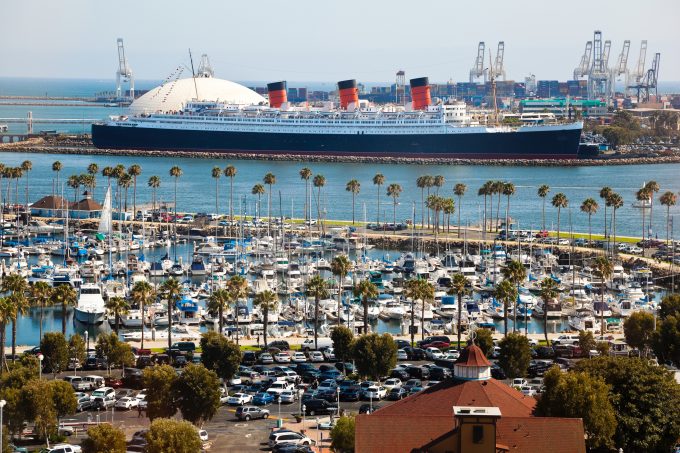Carriers launch new transpac shuttle services as Chinese exports surge
Container lines on Asia-America trades are set to take advantage of strong demand propelled by ...
TFII: SOLID AS USUALMAERSK: WEAKENINGF: FALLING OFF A CLIFFAAPL: 'BOTTLENECK IN MAINLAND CHINA'AAPL: CHINA TRENDSDHL: GROWTH CAPEXR: ANOTHER SOLID DELIVERYMFT: HERE COMES THE FALLDSV: LOOK AT SCHENKER PERFORMANCEUPS: A WAVE OF DOWNGRADES DSV: BARGAIN BINKNX: EARNINGS OUTODFL: RISING AND FALLING AND THEN RISING
TFII: SOLID AS USUALMAERSK: WEAKENINGF: FALLING OFF A CLIFFAAPL: 'BOTTLENECK IN MAINLAND CHINA'AAPL: CHINA TRENDSDHL: GROWTH CAPEXR: ANOTHER SOLID DELIVERYMFT: HERE COMES THE FALLDSV: LOOK AT SCHENKER PERFORMANCEUPS: A WAVE OF DOWNGRADES DSV: BARGAIN BINKNX: EARNINGS OUTODFL: RISING AND FALLING AND THEN RISING

January import volumes at the ten largest US container ports fell 17.9% against the record throughput of January last year, with the biggest declines at west coast ports.
And with an expected “significant volume decline” this month too, US box ports are preparing for a tough first six months before an anticipated recovery in the second half of the year.
According to the latest McCown container volume analysis, there were 23.5% fewer containers discharged at US west coast ports last month than the previous year, at 775,577 teu, with the port of Long Beach the worst performer, recording a drop of 32.3%, to 263,394 teu.
The McCown report also recorded a 12.6% fall in import containers at US east and Gulf Coast ports in January, to 919,589 teu, with volumes at New York/New Jersey seeing the biggest contraction, of 20.6%, to 316,010 teu.
Report author John McCown said: “Potential labour unrest on the west coast continued to play a role in shifting volumes eastward in addition to the broader adjustment of inbound volumes from pandemic-fuelled goods purchases.”
Moreover, California’s San Pedro Bay terminals also saw a big drop in the number of empty containers repositioned to Asia in January – as headhaul demand slumped and carriers stored equipment at increasingly overwhelmed US depots – down 26% from Los Angeles, to 251,251 teu, and down 29% at Long Beach, to 204,755 teu.
However, there was better news on US exports, with the combined total shipped from the top US ports up 11.9% on the previous year, to 811,078 teu.
Nevertheless, the export gain was entirely due to a 25.7% spike in boxes shipped from the US east coast, 505,599 teu; exports from US west coast ports fell 5.2%, to 305,478 teu.
“The performance of export containers continues to improve with a solid gain in January,” said Mr McCown and Long Beach executive director Mario Cordero said the port was “confident we will grow cargo volume” and “recapture market share”.
However, neighbouring Los Angeles executive director Gene Seroka said “as expected, January was soft” and warned there would be a “significant volume decline” in February.
He advised that, from the same number of vessel arrivals last month, compared with January 2022, ships arrived at the LA terminals with about 16% less cargo.
“Many factories in Asia have had extended lunar new year closures, retailers continue to discount products to clear warehouses and inflation-led economic concerns remain top of mind for Americans,” said Mr Seroka.
He said that, in contrast to 2022, which saw a very strong first six months on the transpacific tradelanes, this year was “shaping up to see a more robust setting in the back half of the year”.
“Based on our forecasting model and conversations we are having within the industry, we’ll likely see numbers improve in the second half of the year,” said Mr Seroka.
Comment on this article